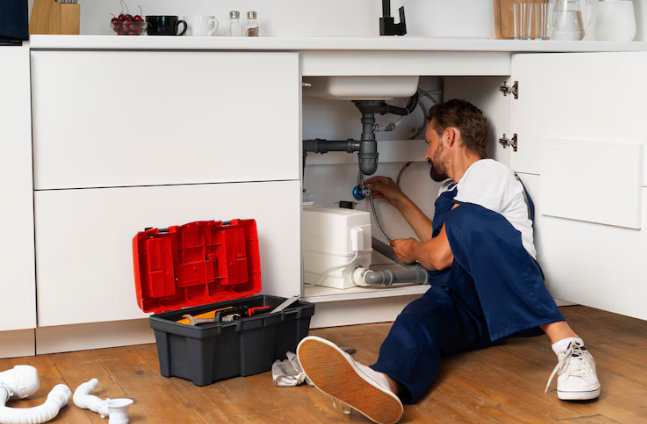Few things are as invigorating and rejuvenating as a hot shower. Yet, we’ve all experienced the frustration of standing under tepid or icy water when we were expecting a warm, comforting pour.
If you’re a homeowner encountering this perplexing problem, fret not – your spa-like oasis can be restored. In this comprehensive guide, we’ll walk you through the potential reasons why your shower is refusing to deliver that soothing heat, and the best course of action to ensure you don’t have to endure another cold rinse.
Understanding the Issue
Before you pick up a wrench or dial a plumber, it’s critical to grasp why your shower may be offering chilly cascades instead of luxurious streams of hot water. Here’s a breakdown of the most common reasons.
Water Heater Woes
At the heart of most shower malfunctions lies the water heater. If your hot water supply seems to have vanished, it could be due to an aging heater that needs maintenance, repair, or even replacement.
Temperature Setting Problems
Modern showers come equipped with anti-scald devices and precise temperature controls. A misfiring thermostat or inaccurate settings could be at the root of your lukewarm encounters.
Plumbing Blockages
Any obstructions in the hot water line leading to your shower can hinder the flow of warmth. Mineral buildup is a frequent offender, especially in areas with hard water.
DIY Troubleshooting
For the proactive homeowner, there are several steps you can take to diagnose and potentially rectify the issue.
Inspect the Water Heater
Start by checking the water heater itself. Confirm that it’s powered on and that the pilot light (for gas heaters) or the circuit breaker/fuse (for electric ones) hasn’t tripped. If all seems well, try adjusting the temperature setting a little higher to see if that makes a difference.
Examine the Shower’s Temperature Controls
Spend some time with the shower’s controls. Turn the handle to see if you can feel any resistance or if the temperature doesn’t change smoothly, which could indicate problems with the mixing valve, cartridge, or other internal components.
Check for Blockages
Mineral buildup can restrict the hot water flow, so a quick check of the showerhead and other fixtures for debris is a good starting point. But if the flow is still scant, you might need to inspect the pipes themselves, which can be a bit trickier.
Advanced Troubleshooting and Possible Fixes
If you’ve gone through the initial checks and your shower still isn’t performing, it might be time to dig a little deeper or call in reinforcements.
Water Heater Maintenance
Flushing your water heater can help clear out sediment and mineral buildup, improving efficiency and reducing the risk of a no-hot-water situation. This process involves turning off the heater, connecting a hose to the drain valve, and letting the water flow out until it runs clear.
Addressing Temperature Control Issues
Depending on the exact nature of the problem, you may need to replace a component within the shower’s temperature control system. This could be a task within the realm of a capable DIYer, but if you’re not comfortable with it, it’s best to contact a professional.
Resolving Plumbing Blockages
For stubborn blockages deep within your plumbing, you may need the help of a plumber. They have the specialized tools, like drain snakes and hydro jets, to clear clogs without causing damage to your pipes.
When to Call a Professional Hamilton Plumber
If you’ve attempted the above steps and your shower still won’t provide hot water, or if you’re unsure about proceeding with any DIY work in the first place, it’s time to contact a licensed plumber, like Rescue Rooter. They can perform a comprehensive assessment and recommend the best course of action to restore your hot water supply.
Proactive Plumbing Practices
In the same vein as “an ounce of prevention is worth a pound of cure,” there are measures you can take to ensure your shower remains a hotbed of hygienic indulgence.
Regular Maintenance
Sporadic maintenance doesn’t cut it when it comes to your plumbing. Just as with other systems in your home, a regular checkup, perhaps annually, can help you catch and fix problems before they escalate.
Mind Your Water Quality
Consider installing water softeners or filters if your area has hard water. These devices can significantly reduce the amount of mineral deposits in your plumbing, making the water heater’s and shower’s life easier.
Temperature Control Awareness
Be mindful of the temperature setting on your water heater and the shower controls. Extreme changes can put unnecessary stress on the system. If you have young children, consider setting the heater to deliver warm, not hot, water to the rest of your home to prevent scalding, and then use your shower control to fine-tune the temperature.
The absence of hot water in your shower can be a head-scratcher, but with systematic troubleshooting and maintenance, your bathing bliss can be easily reinstated. Remember, when in doubt, always reach out to a professional.
By following these tips, you’re not only reclaiming the comfort of your hot shower but also establishing good plumbing practices for the long-term wellbeing of your home. And who knows, you might just luxuriate in the satisfaction of having fixed the issue all by yourself. Now, go ahead and step into the warm, welcoming cascade you’ve so dearly missed. If you are in need of water heater repairs in Hamilton, call Rescue Rooter today!





